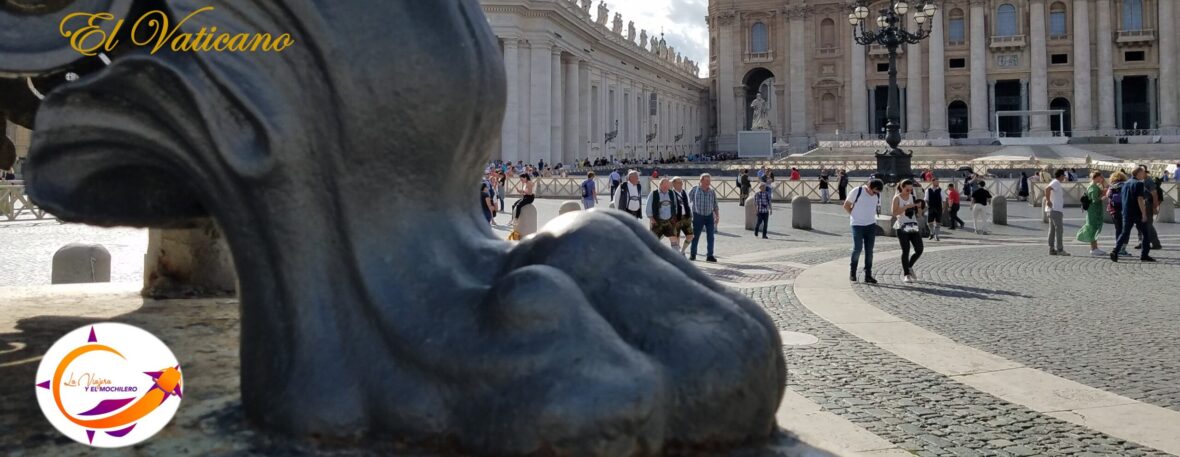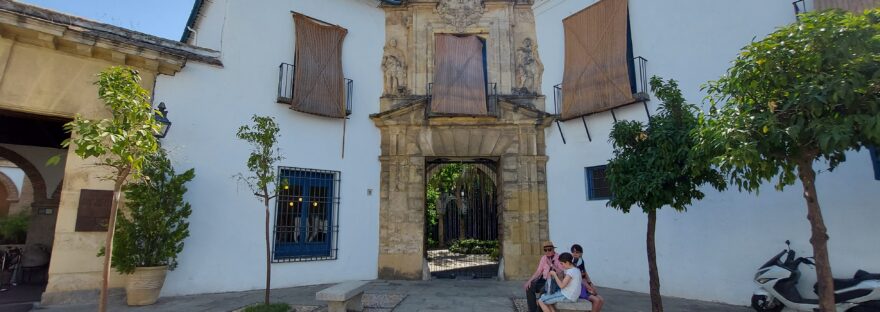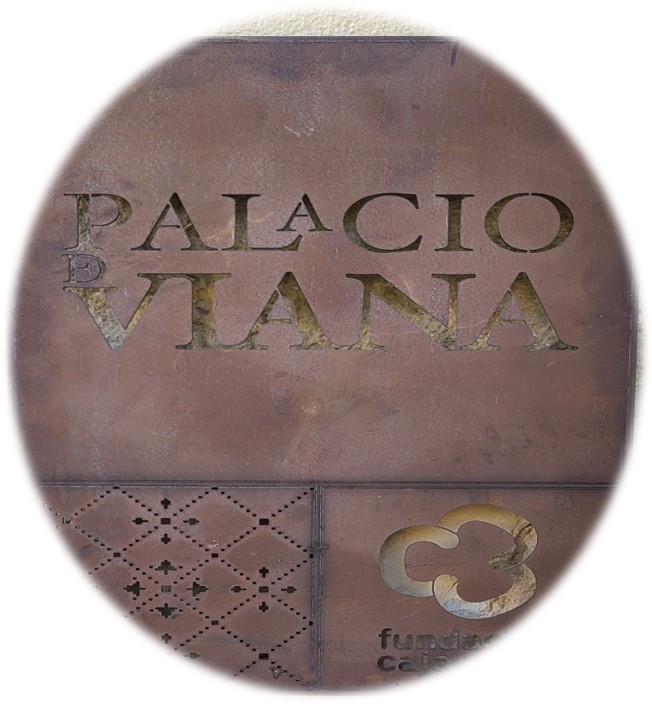 On our second visit to Cordoba, we confirmed once again why this Spanish city is internationally renowned for its beautiful patios. And this time it was our turn to go in summer, so we were delighted with the flowery beauties we would find there.
On our second visit to Cordoba, we confirmed once again why this Spanish city is internationally renowned for its beautiful patios. And this time it was our turn to go in summer, so we were delighted with the flowery beauties we would find there.
This time we included among the places to visit the Palacio de Viana, which at first glance seems a sober and simple structure. Actually, it is not. When we made our entrance, we lacked enough adjectives to describe what awaited us inside, a real beauty.
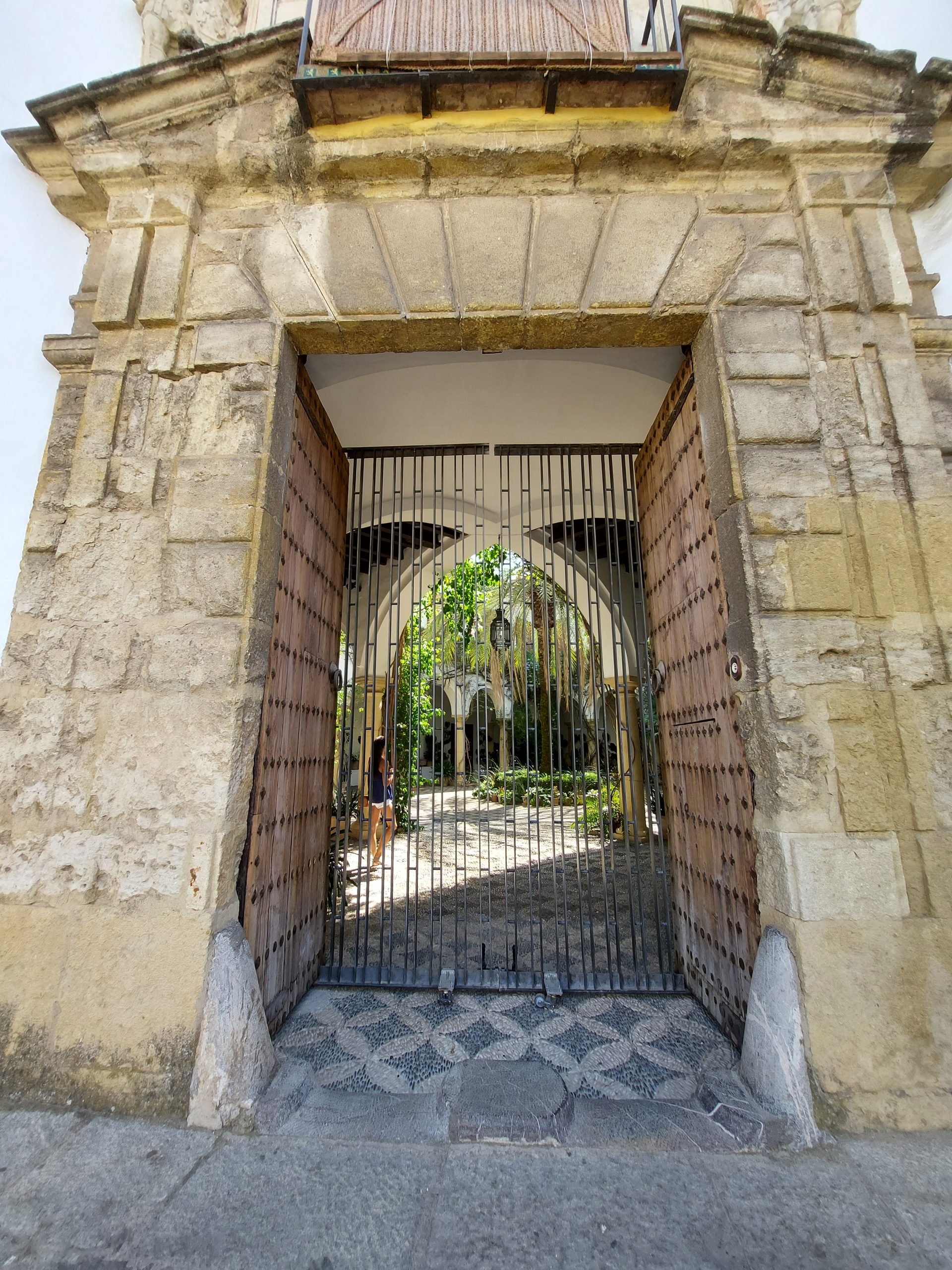
When we talk about the Palacio de Viana, we are talking about a stately home, which from the fifteenth to the nineteenth centuries is linked to the manor and later marquisate of Villaseca. In 1873, the IX Marquise of Villaseca, widow and sole heiress of the properties of the marquisate, among which was this house, married in second marriage to Mr. Teobaldo Saavedra, son of the Duke of Rivas, to whom King Alfonso XII granted in 1875 the title of Marquis of Viana. Later, in 1980, the III Marquise de Viana, widowed and without descendants, sold the house to the Caja Provincial de Ahorros de Córdoba. Currently, it belongs to the CajaSur Foundation.
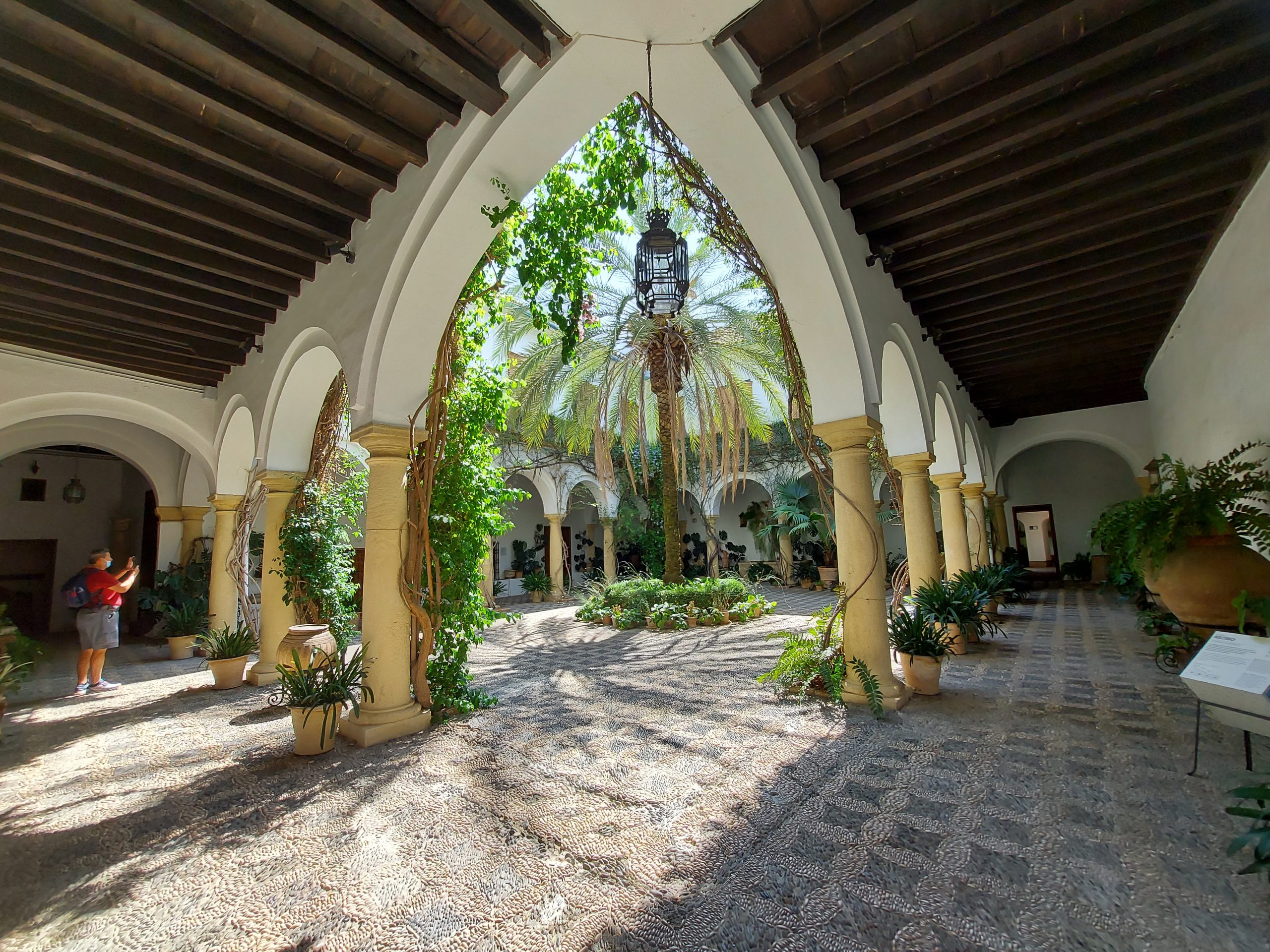
The residence itself can be visited, and although photographs are not allowed, go through the experience of discovering every space, every room and a truly exquisite atmosphere. The evolution of architectural styles and its decoration, allows us to travel to other times and thus have an idea of the tastes and how was the daily life of these privileged classes in the era of greatest splendor of the Palace.
Now let’s go to the spaces that do allow us to photograph, the beautiful courtyards of the Palacio de Viana, which are perfectly integrated into the house. There are no more and no less than twelve courtyards and the garden, where the tour of each one becomes a feast of colors, smells, sounds and textures. Each one has its own personality, offering a changing environment to be enjoyed at different times of the day. We cannot forget one of its important elements, water, which merges with the vegetation creating a patio in harmony with nature.
- Reception Courtyard. From the 16th century, it became the entrance to the palace. It has sixteen columns in Tuscan style and the Cordovan enchinado is from 1926. It is attached to the stables, which also had an exterior access, and where there are twenty-six cribs with capacity for sixteen horses and an eighteenth-century bridal carriage for seven horses. The carriage was acquired by the II Marquis of Viana in Ecija.
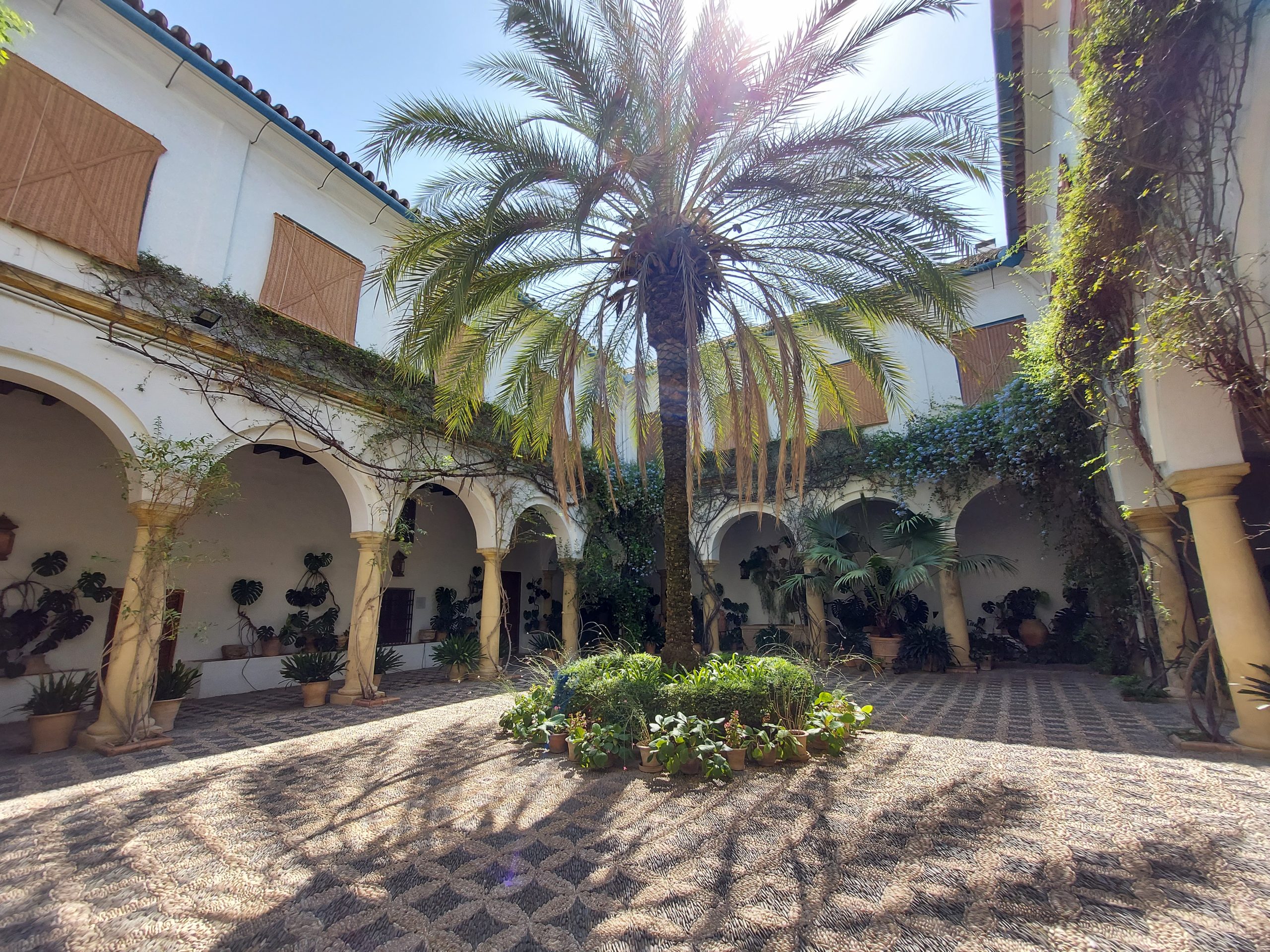
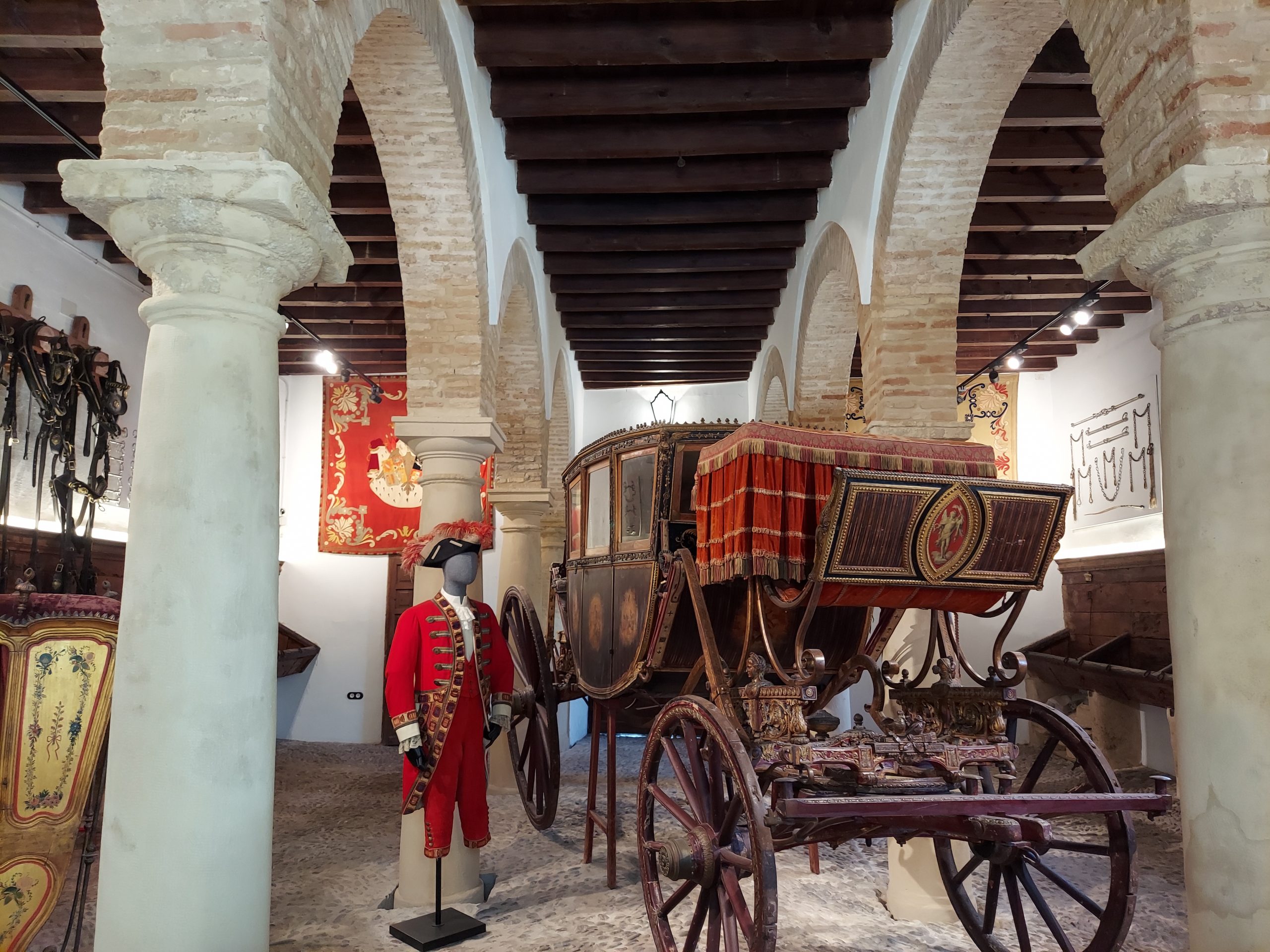
- Patio of the Cats. This courtyard was formed by houses of neighbors called houses of the Puentezuela de Tres Caños, being the first documented courtyard of neighbors in the city of Cordoba, which were bought by the first lord of Villaseca in 1545. From the 18th century onwards they were finally connected to the palace and in 1735 it is known that they were already destined for the administrators of the palace. Later, when the Viana family acquired the property in 1873, the kitchens were installed in the adjoining room, which is why it also came to be known as the courtyard of the kitchens. That is precisely why it was called the patio of the Cats, when the felines came to smell the food.
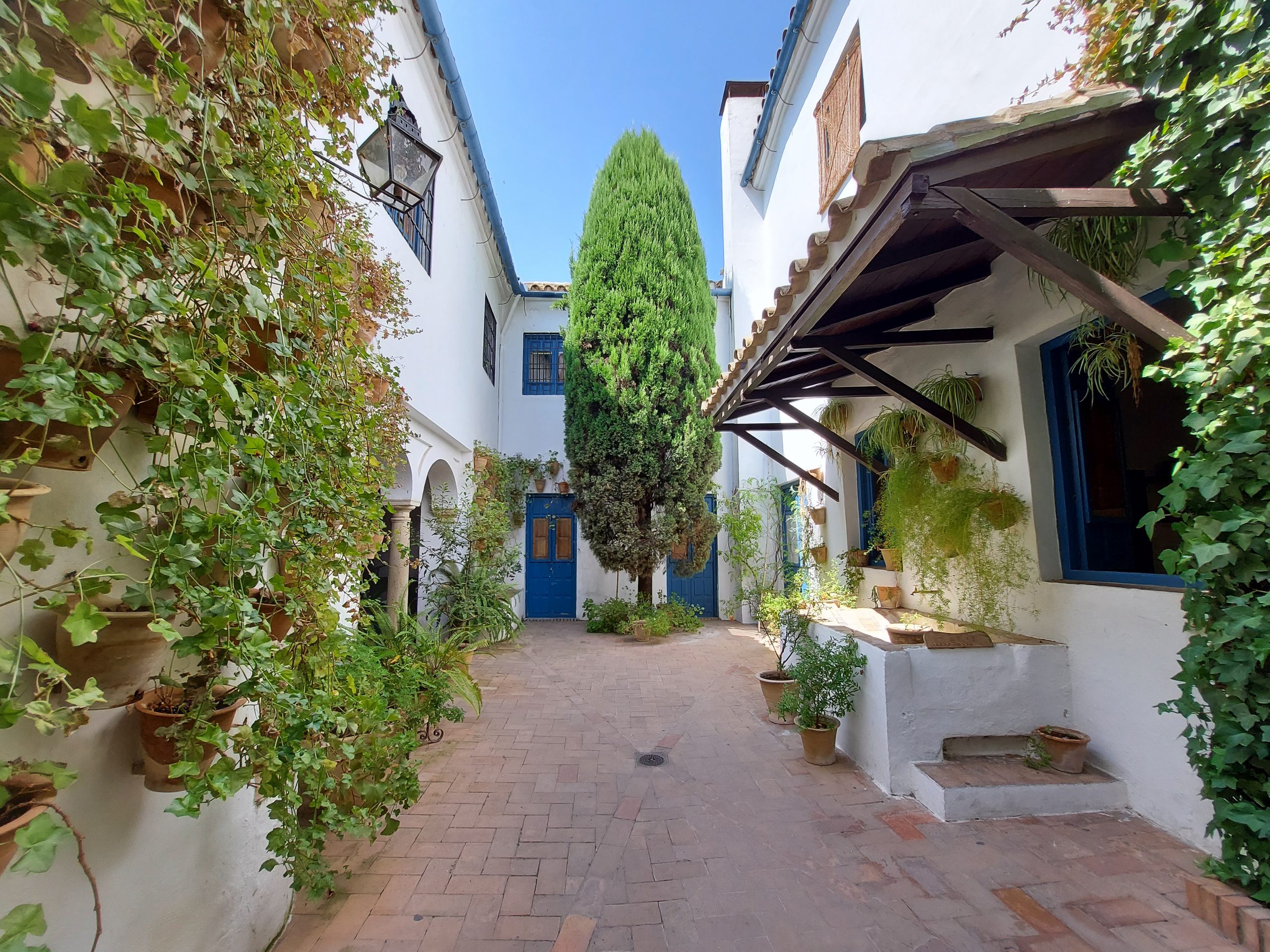
- Patio of the Orange Trees. It was the original entrance of the palace during the 15th century until the construction of the courtyard of Recibo. It has a large number of orange trees, hence its name, as well as an ornamental pool. The enchinado paving was applied in the 1980s after the opening to the public, as it was made of albero, an ochre-colored earth used in gardening and bullrings.
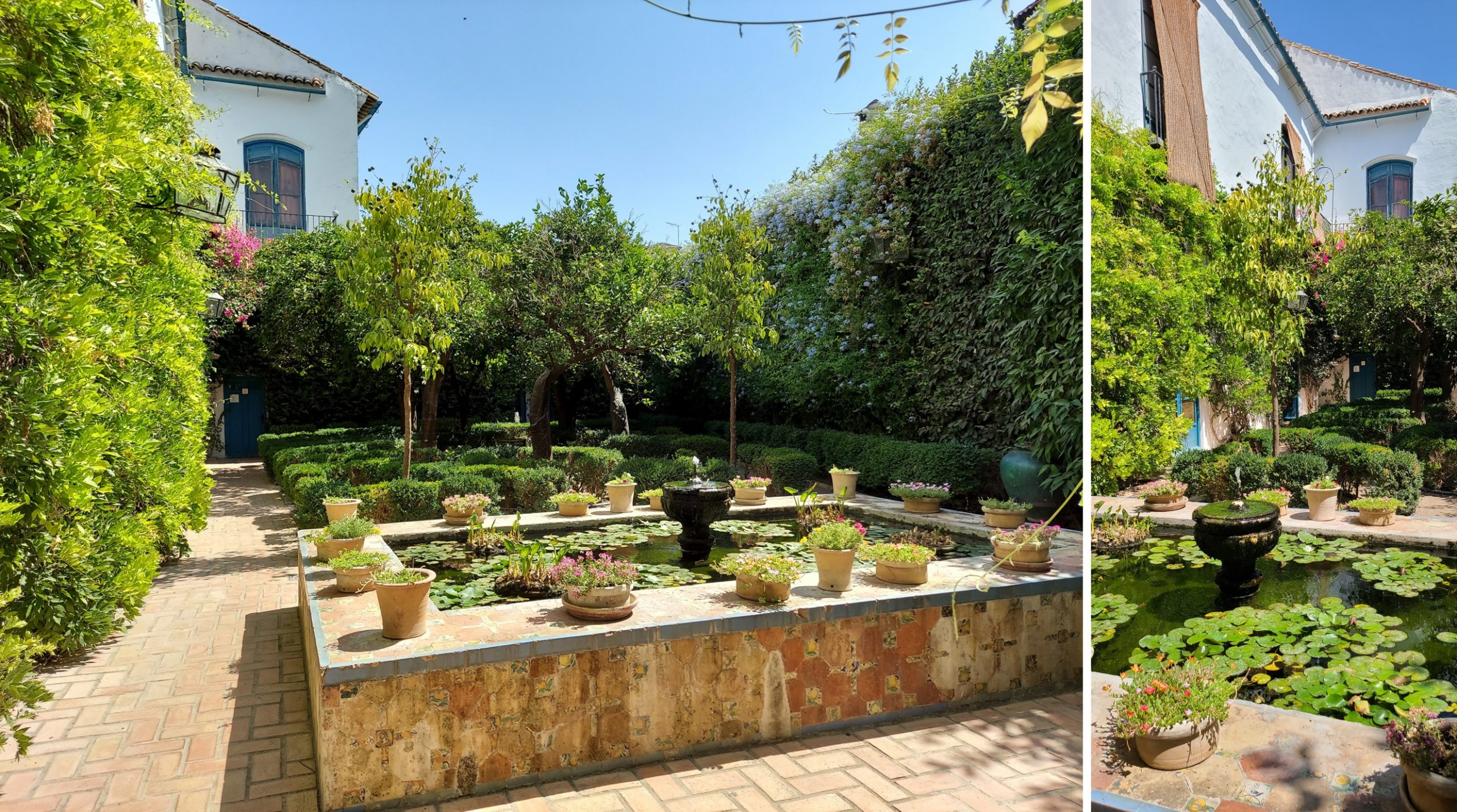
- “Patio de las Rejas”. It is named after the monumental grilles made by Bartolomé de los Reyes in 1624, which allow to observe the courtyard from the outside as a sign of the high social status of its owners, so it has always been one of the most pampered courtyards by the owners. The citrus trees on the walls and the pots of centaurea around the fountain stand out. The azulejo (Centaurea cyanus) is known for its medicinal and aesthetic properties, and can be used to ornament gardens, or in pots on terraces and balconies in the case of its dwarf varieties.
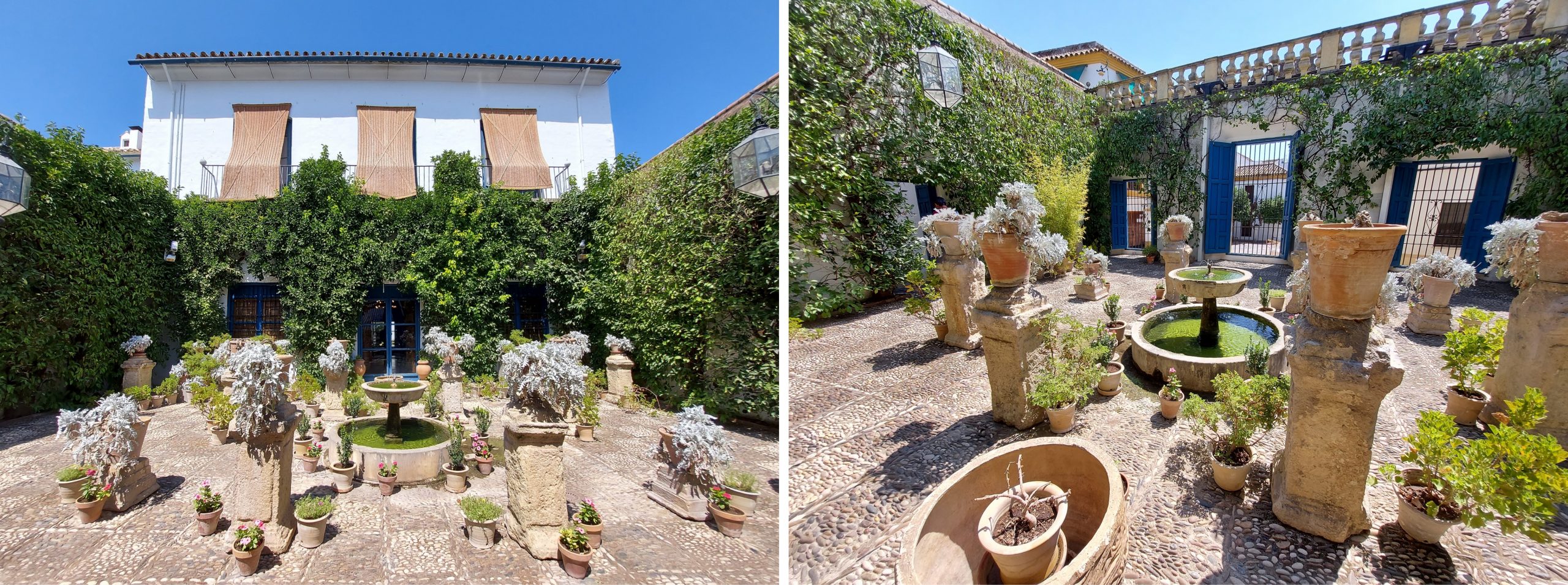
- Patio of the Madama. Built in the 18th century by the VI Marquise of Villaseca. It receives this name because of the statue of a naiad (nymphs of the bodies of fresh water), in the center of a fountain. At the beginning of the 20th century the cypresses that surround it today were added.
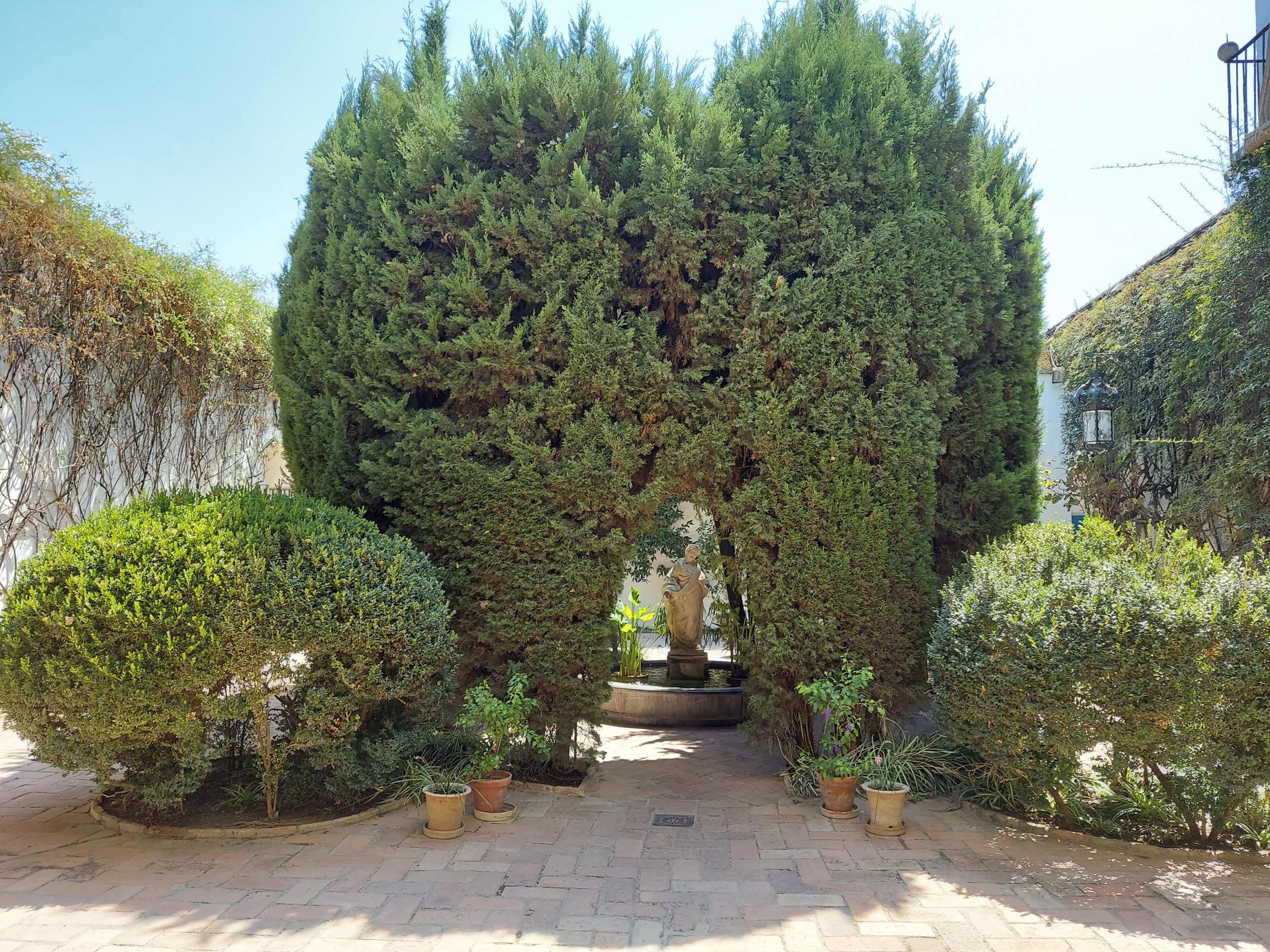
- Patio of the Columns. It is the most recent courtyard built in the Palacio de Viana, built during the 1980s. Its size makes it the largest in the complex, second only to the garden. It was decided to use myrtle in this courtyard. Here are held various cultural events such as the May Crosses, exhibitions, theaters or awards ceremonies.
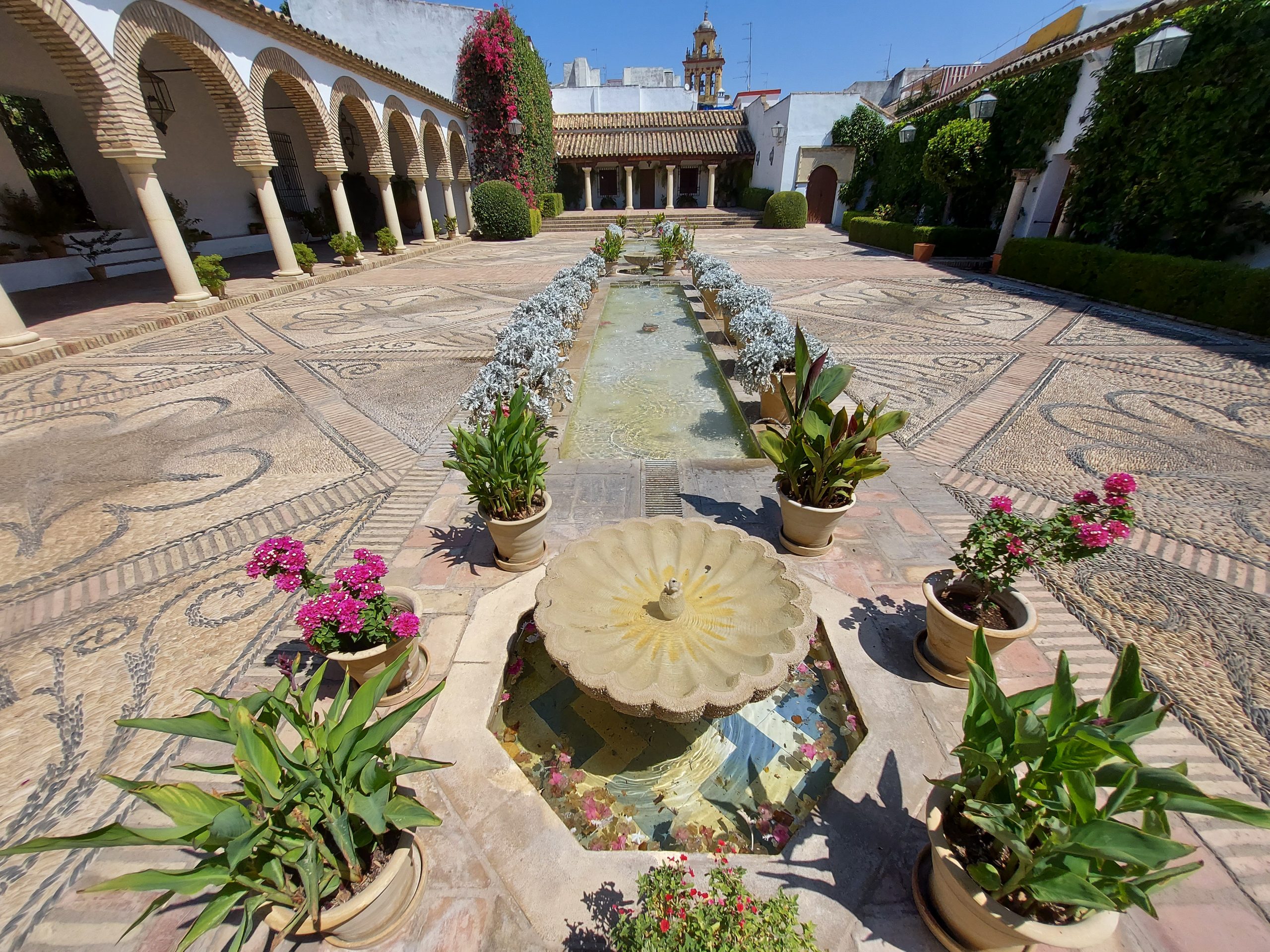
- The garden is the largest outdoor area of the palace (1,200 square meters), acquired by the VII Marquis of Villaseca in 1814. This extension doubled the size of the palace, as the aristocrat considered it necessary to have a larger green space. It is configured in sixteen boxwood parterres, a typical configuration of the French gardens of the time. The holm oak is the oldest plant in the palace, estimated to be more than four hundred years old and reaching twenty-five meters. It is a hardy and resistant tree, capable of surviving during long periods of drought and under extreme conditions, very suitable for the summer in Cordoba.
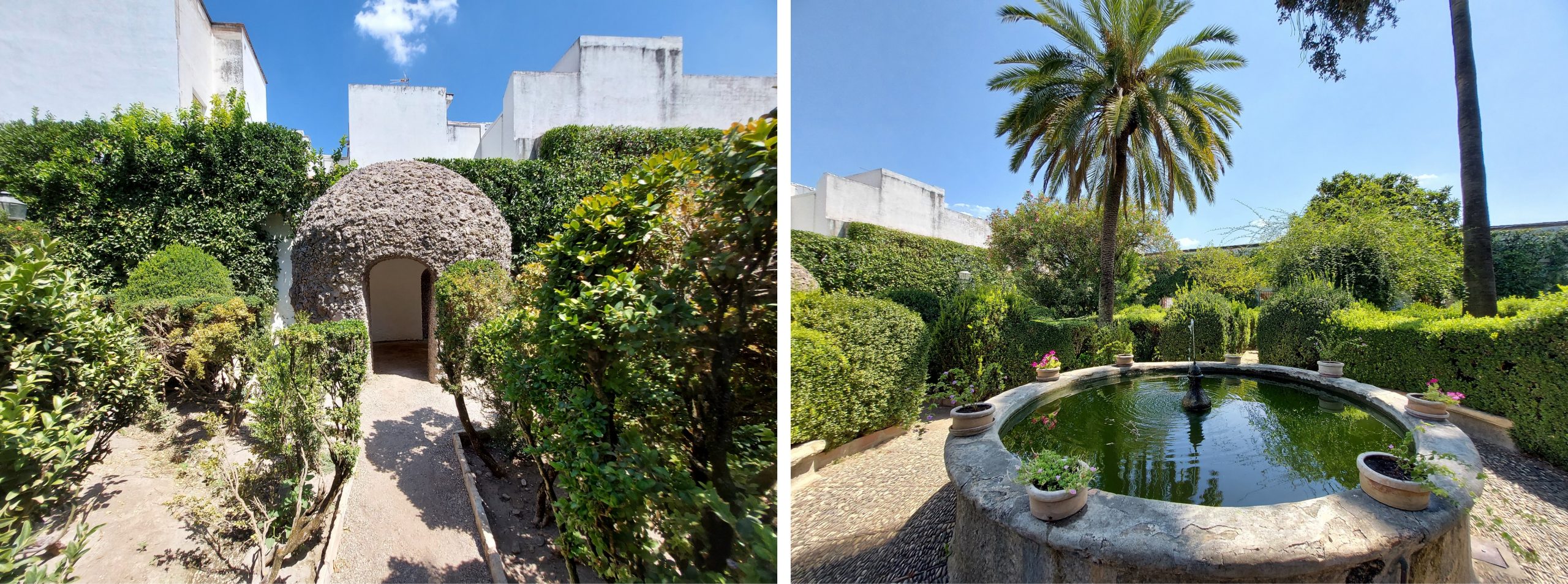
- Patio de la Alberca. It was incorporated next to the garden in 1814. Here was located the country house, where the Viana family managed their other rural properties. Between the end of the 19th century and the beginning of the 20th century it was called the courtyard of the Deer. The greenhouse was built in 1960, while the pool was moved from the neighboring patio del Pozo in 1980.
- Patio del Pozo. Like the Patio de la Alberca, it was incorporated into the palace in 1814. Between the end of the 19th century and the beginning of the 20th century it was known as the Patio de la Noria, because of this missing element that was located there. From the well water is extracted from the Colodro stream that supplies the entire palace and the rest of the courtyards. On the mesh that covers the well there are four buckets or containers to transport water, which were found inside. Another of the water points in the courtyard is a fountain with a gray marble mask with the inscription “Fountain of Doña Leonor”, one of the daughters of the Second Marquis of Viana.
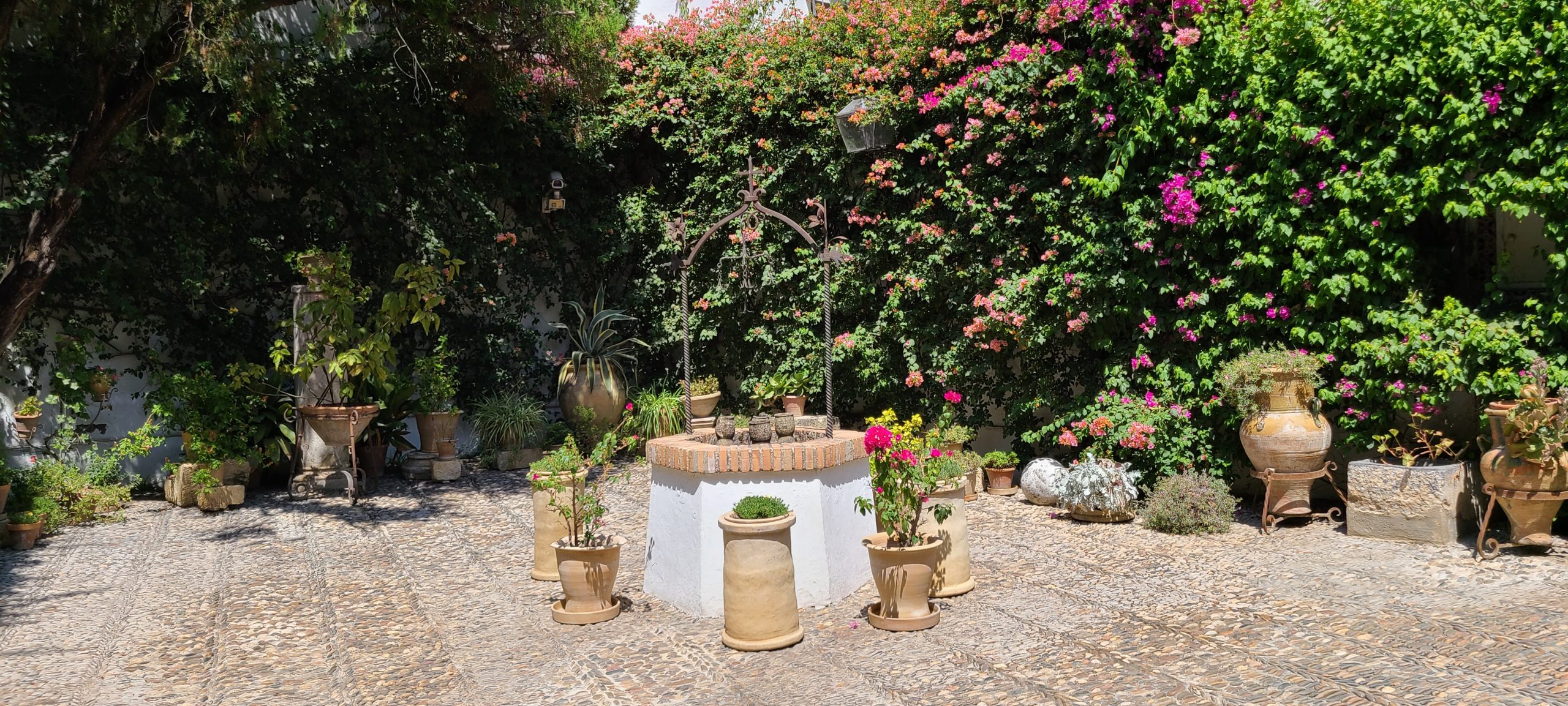
- Gardeners’ Courtyard. In the 19th century it was added to the palace, it remained as a working place for the gardeners, where they kept their gardening tools. To decorate the courtyard, the Second Marquis of Viana brought numerous archaeological remains, such as the lintel of a church. It houses a tile commemorating the inauguration of the oil mill of La Laguna (named for its proximity to Laguna Grande, in Baeza) in 1926 in the presence of King Alfonso XIII.
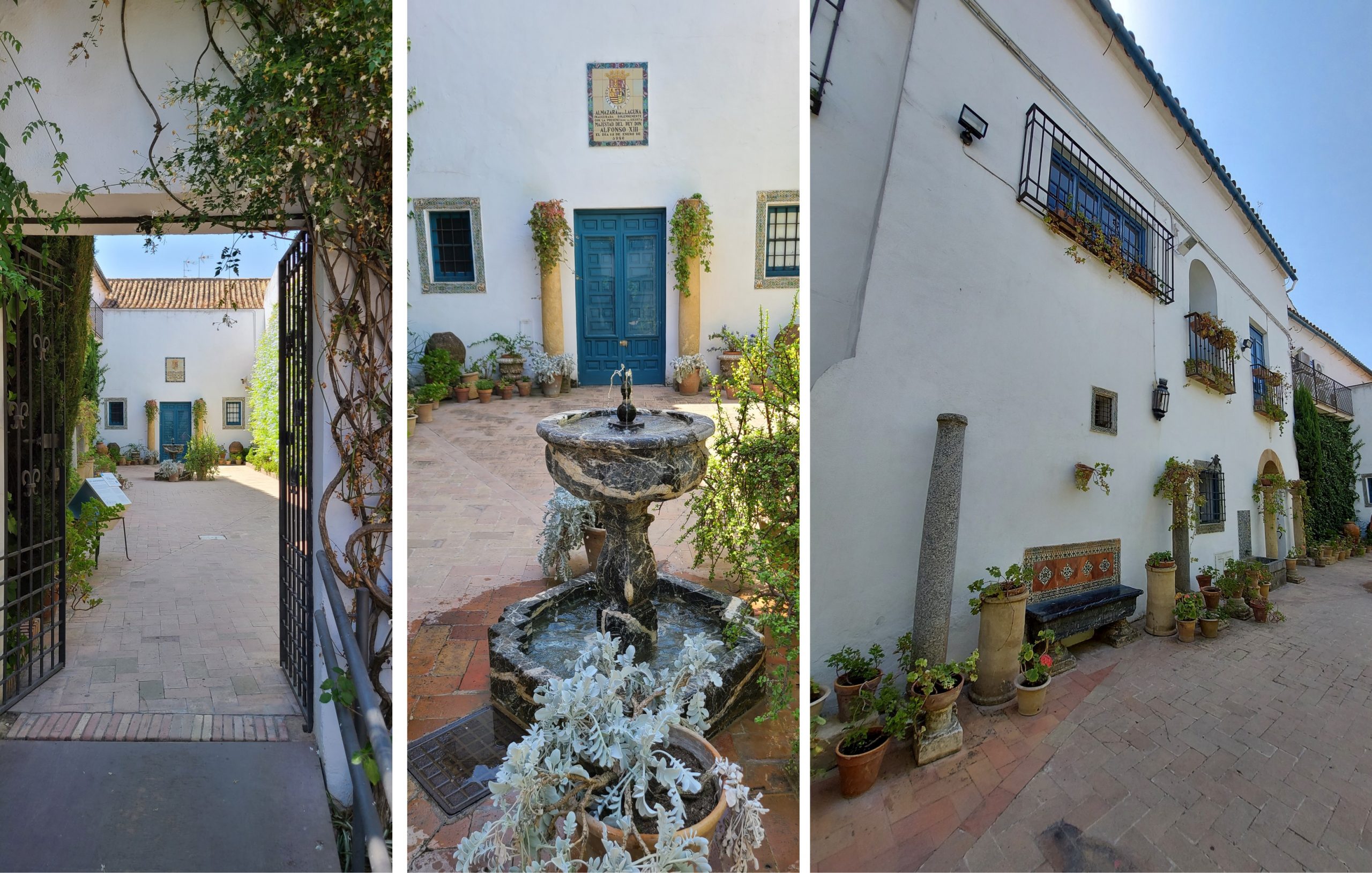
- Chapel Courtyard. This courtyard was annexed during the 19th century, being the main courtyard of the former owners of Torres Cabrera, although it was already in place in the 17th century. As it is the coolest patio in the complex, it has a smaller variety of flowers. Its name comes from the existence of a chapel attached to the courtyard, in which we find three paintings: San Rafael and San Miguel (1655-56), both by Valdés Leal, and Allegory of the defense of the Immaculate Conception by the Franciscans, from the school of Antonio del Castillo.
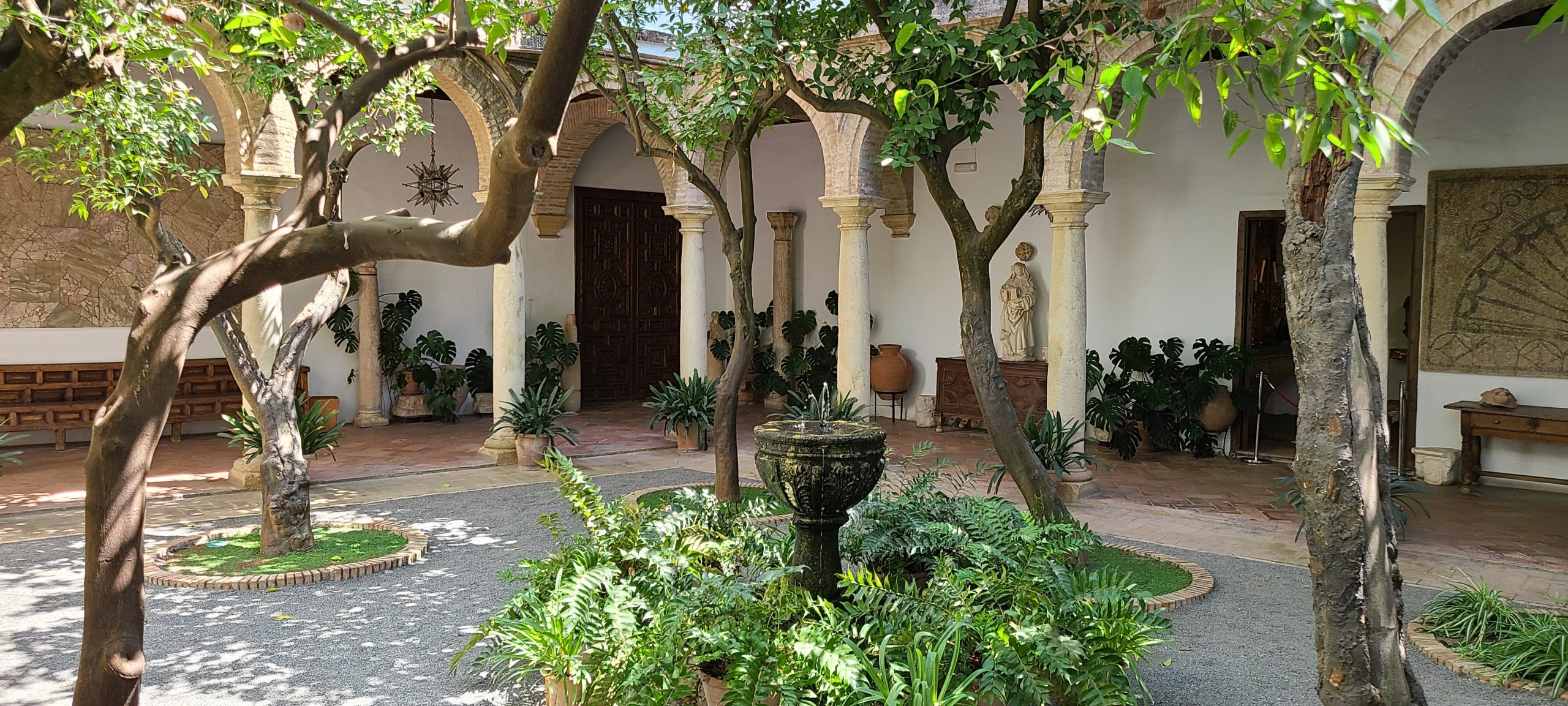
- Courtyard of the Archive. From the eighteenth century, is the innermost courtyard of the complex, its name is due to the palace archive located on the mezzanine. This archive, which houses more than 300,000 documents from between the twelfth and twentieth centuries, was the only part of the palace that did not pass into the hands of CajaSur in 1980, but was acquired in 2000 and opened to researchers. The fountain is the only point of color in the courtyard, as the walls are whitewashed.
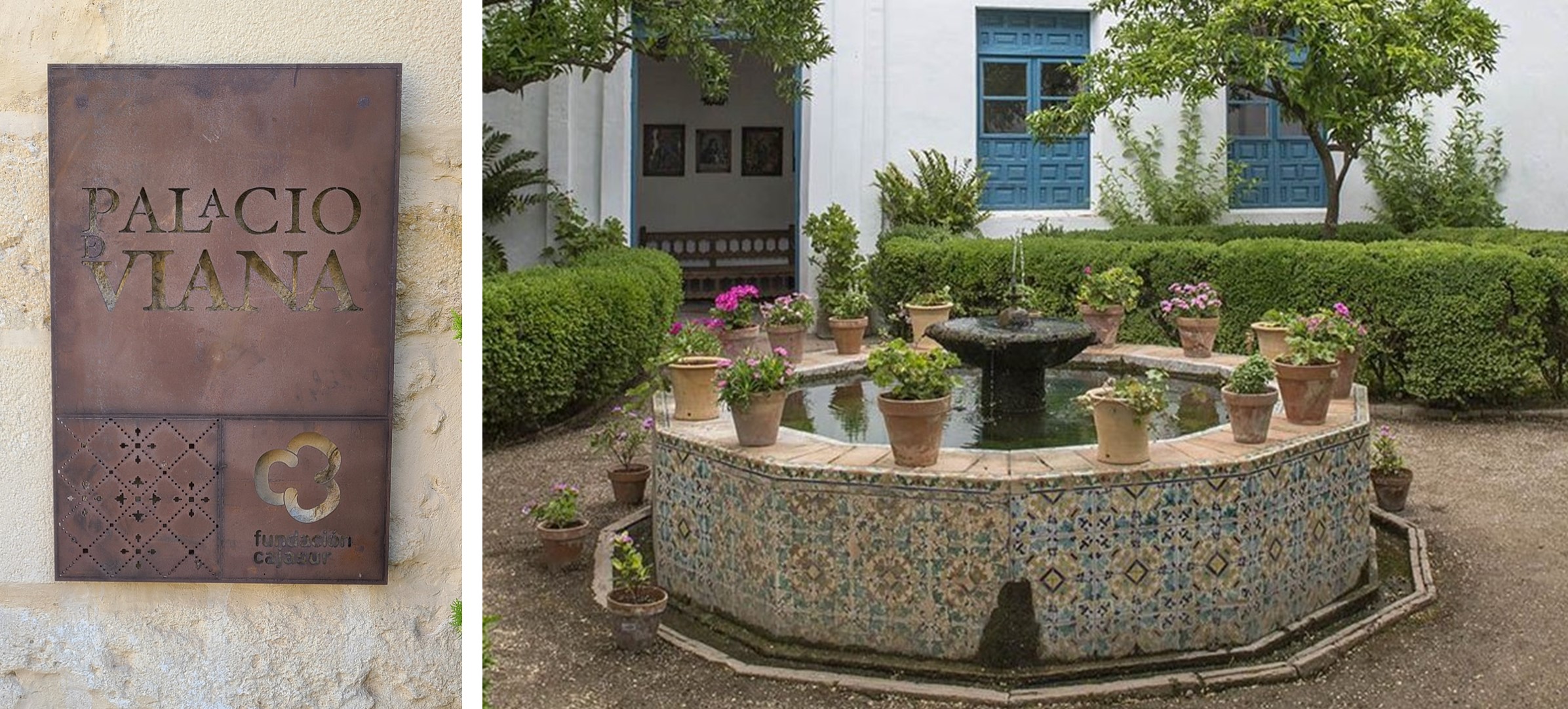
- “Patio de la Cancela”. It was the entrance to the palace of the Marquises of Torres Cabrera until its acquisition in the 19th century, when it was integrated into the complex. It has been the entrance to carriages, as evidenced by a trough reused as a planter, and in the mid-twentieth century archaeological objects were added such as a marble plaque from the second century of the fight of Hercules against the lion of Nemea. It had a barn and stables, and its name is due to the large gate that leads to the outside, currently the entrance for visitors to the palace of Viana. The gate is an architectural element that, like the fence, serves as a fence to separate, close or isolate different spaces.
On March 27, 1981 it was declared an Asset of Cultural Interest in the category of Monument. In the spring of 2012, the courtyards of the Palacio de Viana were opened to the public in a new and renovated way.
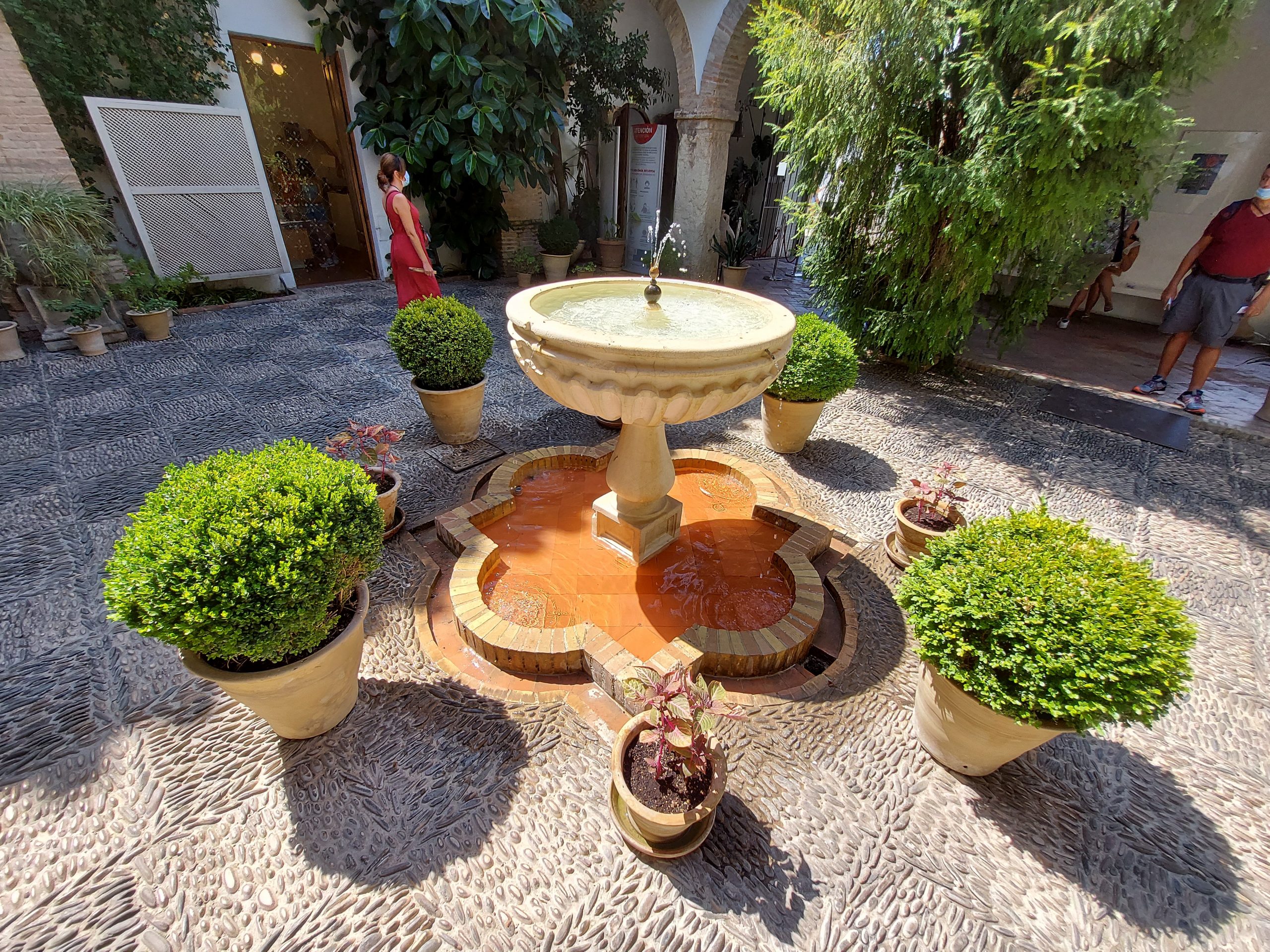
The Viana Palace, is one of those places not to be miss when visiting Cordoba, where one can make a historical and sensory tour of the Cordovan courtyards without ever leaving the same building.
Resources:
- https://es.wikipedia.org/wiki/Palacio_de_Viana_(C%C3%B3rdoba)
- http://www.palaciodeviana.com/la-casa-palacio/
